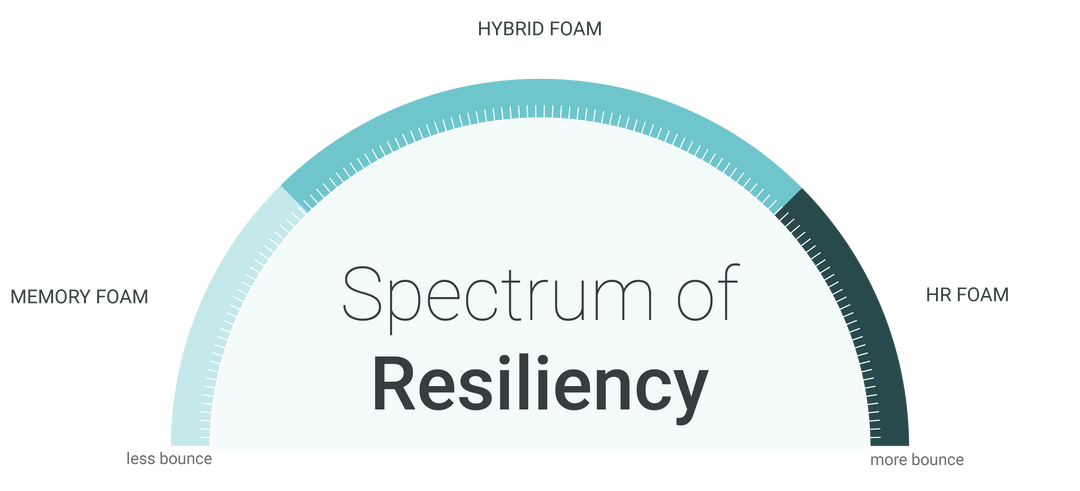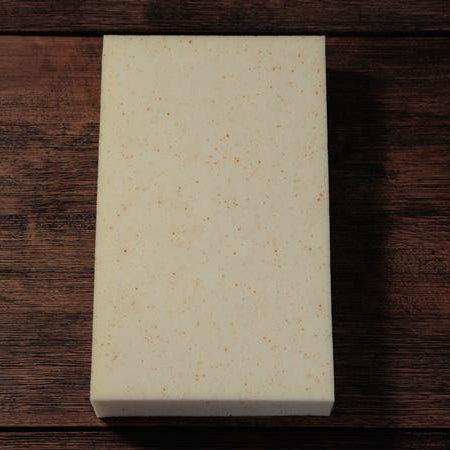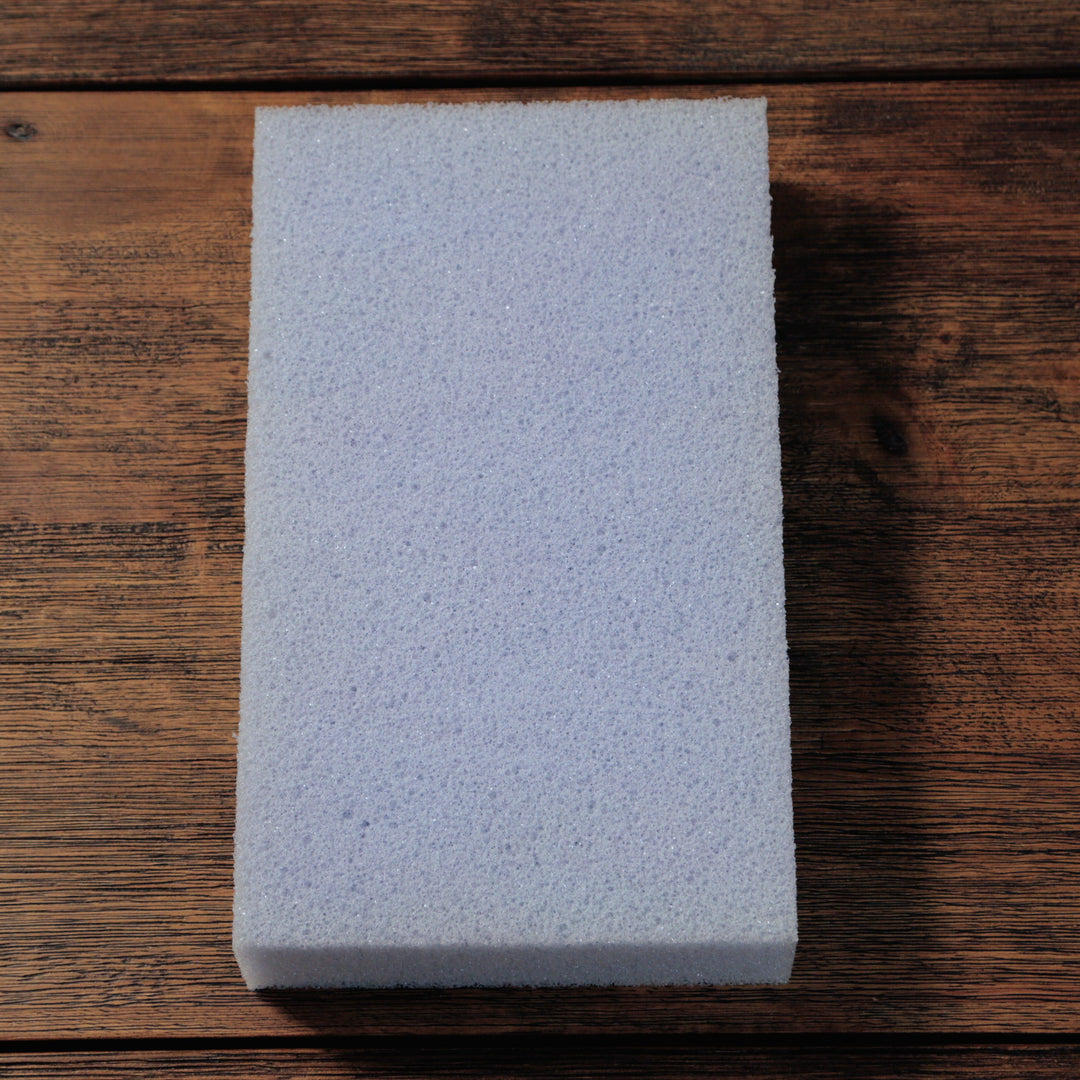Spectrum of resilience
Foam exists on a spectrum. There is an inestimably large number of foam types that could be used to create a multitude of truly unique mattresses. However, for our purposes, we think the majority can be broken down into three main categories.

High Resilience Foam
H.R. – or High Resiliency – Foam is similar in structure to a lot of different latex options. Their distinctive characteristic is an extremely supportive, very bouncy feel. Where memory foam is famous for its pressure relief and a slow recovery, H.R. foams are known for a superior bounce factor. Check out the video above for a visible demonstration of the vastly different ways these foams react to the application of force.
Often used as a middle layer, though sometimes added on top, it can do a great job of building in more support for your mattress. In our experience, it’s usually a favorite for people who sleep primarily on their back, or people with lower back pain. Alternatively, if you’re a side sleeper with shoulder or hip pain, then this is probably a material you’ll want to steer clear of. Of course, all of this comes with a caveat. Ultimately, it is a matter of taste. The mattress that makes you feel comfortable is the best one for you. Regardless of sleep position.
Take our test to design a bed specific to your unique needs!
Learn about other foam types
Memory Foam
Memory foam has low resiliency and is famous for its
soft, slow recovery and body-contouring, pressure-relief.
Hybrid Foam
Better bounce and resiliency than memory foam and more pressure relief than H.R. options, means hybrid foams are designed to be a happy medium.
Conventional FOam
Conventional foam is usually what you'll find in the base of a mattress. It's not necessarily going to have a lot of fancy bells and whistles, it's meant to add structure




